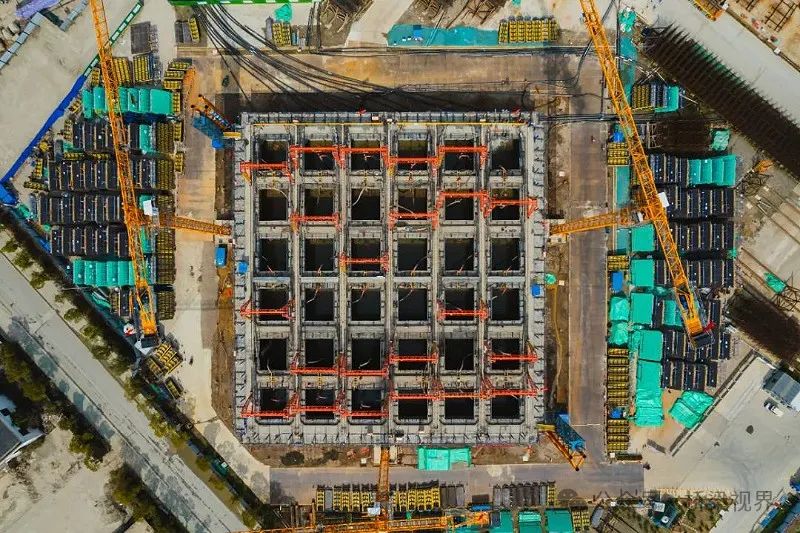On March 22nd, the third sinking of the north anchorage caisson for the north navigation bridge of the Zhang-Jing-Gao Yangtze River Bridge was successfully completed. The maximum tilt of the caisson was 1/10000, with a center offset of 4.5 cm, achieving top domestic control standards for all data indicators.

The Zhang-Jing-Gao Yangtze River Bridge is a key cross-river passage project promoted during the 14th Five-Year Plan period and will be the world’s largest suspension bridge by main span. Among them, the north anchorage caisson of the north navigation bridge is currently the largest caisson foundation for highway bridges in China, with a plane size of 75m×70m and a height of 57m, requiring 4 heightenings and 4 sinkings. This sinking was 13m deep, involving the excavation of 68,000 cubic meters of soil, and featured challenges such as large amounts of slurry processing and difficult sinking control.
To address the massive volume of slurry generated during sinking, the project team adopted a comprehensive disposal method combining professional equipment with traditional natural sedimentation, solving site constraints and reducing environmental pollution. Meanwhile, to overcome difficulties such as complex force conditions and challenging attitude control during caisson sinking, the project team independently developed a 5D intelligent construction system to real-time monitor key indicators of the twin caisson construction. Combined with intelligent excavation equipment and intelligent decision algorithms, they achieved full-cycle visualization, measurement and control of the construction process.
